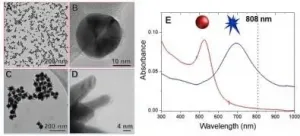Structural insights into how an early SARS-Cov-2 variant gained its advantage
2021-03-16
(Press-News.org) In an analysis that explores the structural underpinnings of a SARS-CoV-2 strain, G614, that quickly became dominant early in the pandemic, researchers discovered interactions that prevent this strain's spike from shedding its host binding domain too early. This may explain the enhanced infectivity of the G614 virus, they say. Throughout the COVID-19 pandemic, epidemiologists have monitored evolution of the SARS-CoV-2 virus with particular focus on the spike (S) protein. Spike trimers decorate the viral surface and facilitate host cell entry. An early variant with a single-residue substitution (G614) in its spike protein rapidly became the dominant strain throughout the world, and studies have also suggested it is more infectious than the original strain. Puzzlingly, studies have shown that it does not bind more tightly to recombinant ACE2, the host cell receptor. Jun Zhang et al. investigated the structural basis for the spread of the G614 virus. Structural and biochemical studies on a full-length G614 S trimer revealed interactions not present in D614, the original strain, which was described in a paper published in Science in July 2020. In particular, a loop wedges between domains in the G614 spike, in an added interaction that appears to stabilize the spike to prevent premature dissociation of the G614 trimer. This effectively increases the number of functional spikes. "[W]e suggest that the enhanced infectivity of the G614 virus largely results from the increased stability of the S trimer," conclude the authors.
ELSE PRESS RELEASES FROM THIS DATE:
New study points to novel drug target for treating COVID-19
2021-03-16
March 16, 2021, PORT ST. LUCIE, FL: Researchers from Cleveland Clinic's Florida Research and Innovation Center (FRIC) have identified a potential new target for anti-COVID-19 therapies. Their findings were published in Nature Microbiology.
Led by FRIC scientific director Michaela Gack, Ph.D., the team discovered that a coronavirus enzyme called PLpro (papain-like protease) blocks the body's immune response to the infection. More research is necessary, but the findings suggest that therapeutics that inhibit the enzyme may help treat COVID-19.
"SARS-CoV-2 - the virus that causes COVID-19 - has evolved quickly against many of the body's well-known ...
Jupiter's "dawn storm" auroras are surprisingly Earth-like
2021-03-16
The storms, which consist of brightenings and broadenings of the dawn flank of an oval of auroral activity that encircles Jupiter's poles, evolve in a pattern surprisingly reminiscent of familiar surges in the aurora that undulate across Earth's polar skies, called auroral substorms, according to the authors.
The new study is the first to track the storms from their birth on the nightside of the giant planet through their full evolution. It was published today in AGU Advances, AGU's journal for high-impact, short-format reports with immediate implications spanning all Earth and space sciences.
During a dawn storm, Jupiter's quiet and regular auroral arc transforms into a complex and intensely bright auroral ...
Study uncovers safety concerns with some air purifiers
2021-03-16
The market for air purifiers is booming, but a new study has found that some air cleaning technologies marketed for COVID-19 may be ineffective and have unintended health consequences.
The study, authored by researchers at Illinois Tech, Portland State University, and Colorado State University, found that cleaning up one harmful air pollutant can create a suite of others.
Both chamber and field tests found that an ionizing device led to a decrease in some volatile organic compounds (VOCs) including xylenes, but an increase in others, most prominently oxygenated VOCs (e.g., acetone, ethanol) and toluene, substances commonly found in paints, ...
Sleep troubles may complicate the grieving process
2021-03-16
Those who have persistent trouble sleeping may have an especially difficult grieving process after the death of a loved one, a new study co-authored by a University of Arizona researcher finds.
Most people who lose a close friend or family member will experience sleep troubles as part of the grieving process, as the body and mind react to the stress of the event, said study co-author Mary-Frances O'Connor, a professor in the UArizona Department of Psychology.
But O'Connor and her collaborators found that those who had persistent sleep challenges before losing someone were at higher risk for developing complicated grief after a loss. Complicated grief is characterized by a yearning for a lost loved one ...
Easing the burden on transgender and nonbinary graduate students
2021-03-16
It would surprise no one that pursuing a graduate degree can be a stressful endeavor, and for students who are transgender and nonbinary (TNB), the atmosphere can become toxic, according to University of Houston researcher Nathan Grant Smith. In a new paper published in Higher Education, Smith provides an analysis of current literature pertaining to TNB graduate student experiences and suggests interventions in graduate education to create more supportive environments for TNB students.
"Nearly 50% of graduate students report experiencing emotional or psychological distress during their enrollment in graduate school. Levels of distress are particularly high for transgender ...
How sperm remember
2021-03-16
It has long been understood that a parent's DNA is the principal determinant of health and disease in offspring. Yet inheritance via DNA is only part of the story; a father's lifestyle such as diet, being overweight and stress levels have been linked to health consequences for his offspring. This occurs through the epigenome - heritable biochemical marks associated with the DNA and proteins that bind it. But how the information is transmitted at fertilization along with the exact mechanisms and molecules in sperm that are involved in this process has been unclear until now.
A new study from McGill, published recently in Developmental Cell, has made a significant advance in the field by identifying how environmental information is transmitted by ...
What sparked life on Earth? Perhaps bolts from the blue
2021-03-16
Lightning strikes -- perhaps a quintillion of them, occurring over a billion years -- may have provided sparks of life for the early Earth.
A new study by researchers at Yale and the University of Leeds contends that over time, these bolts from the blue unlocked the phosphorus necessary for the creation of biomolecules that would be the basis of life on the planet.
"This work helps us understand how life may have formed on Earth and how it could still be forming on other, Earth-like planets," said lead author Benjamin Hess, a graduate student in Yale's Department of Earth & Planetary ...
Lightning strikes played a vital role in life's origins on Earth
2021-03-16
Lightning strikes were just as important as meteorites in creating the perfect conditions for life to emerge on Earth, geologists say.
Minerals delivered to Earth in meteorites more than 4 billion years ago have long been advocated as key ingredients for the development of life on our planet.
Scientists believed minimal amounts of these minerals were also brought to early Earth through billions of lightning strikes.
But now researchers from the University of Leeds have established that lightning strikes were just as significant as meteorites in performing this essential function and allowing life to manifest.
They say this shows that life could develop on Earth-like planets through the same mechanism at any time if atmospheric conditions are right. The research ...
Project investigates remote control of enzymes using light
2021-03-16
The activity of enzymes in industrial processes, laboratories, and living beings can be remotely controlled using light. This requires their immobilization on the surface of nanoparticles and irradiation with a laser. Near-infrared light can penetrate living tissue without damaging it. The nanoparticles absorb the energy of the radiation and release it back in the form of heat or electronic effects, triggering or intensifying the enzymes' catalytic activity. This configures a new field of study known as plasmonic biocatalysis.
Research conducted at the University of São Paulo's Chemistry Institute (IQ-USP) in Brazil investigated the activity of enzymes immobilized on gold ...
New study predicts changing Lyme disease habitat across the West Coast
2021-03-16
FLAGSTAFF, Ariz. -- March 16, 2021 -- The findings of a recent analysis conducted by the Translational Genomics Research Institute (TGen), an affiliate of City of Hope, suggest that ecosystems suitable for harboring ticks that carry debilitating Lyme disease could be more widespread than previously thought in California, Oregon and Washington.
Bolstering the research were the efforts of an army of "citizen scientists" who collected and submitted 18,881 ticks over nearly three years through the Free Tick Testing Program created by the Bay Area Lyme Foundation, which funded the research, producing a wealth of data for scientists to analyze.
This new study builds on initial research led by the ...




